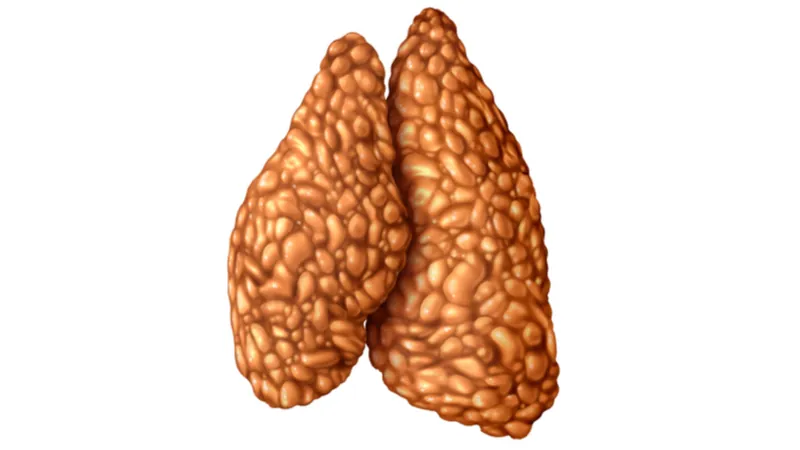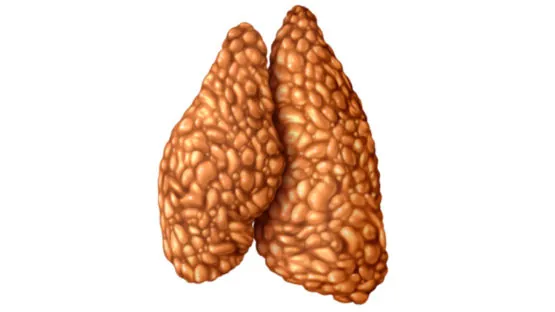Researchers from the Monash Biomedicine Discovery Institute have made progress in the quest to rejuvenate the aging immune system by identifying the factors responsible for the age-related decline of the thymus.
The thymus shrinks as we age
The thymus is one of the most important organs in the body, and it is where thymocytes produced in the bone marrow travel to become new T cells before being trained in the lymph nodes to become the defenders of the adaptive immune system. However, as we get older, the thymus increasingly turns to fat and starts to shrink, causing its ability to produce new T cells to fall dramatically. This process is known as thymic involution and actually begins shortly after puberty, so this is one aspect of aging that begins fairly early in life, although it is many decades later before its decline causes serious health issues.
The fall in production of new T cells from the thymus results in a decline of the adaptive immune system and is part of the collective decline of the immune system called immunosenescence. The end result of immunosenescence is that your body is no longer able to mount an effective defense against diseases and is inappropriately activated, leading to dysfunction and persistent inflammation. This inflammation contributes to inflammaging, a chronic smoldering background of low-grade inflammation, which other age-related sources contribute to as well.
The decline of the thymus has been linked to cancer risk, which rises dramatically as we age as part of the immunosenescence model of cancer. Immunosenescence is also strongly correlated with multiple age-related diseases, which is probably no surprise, given that the aged immune system is no longer able to respond effectively or even appropriately to invading pathogens.
While it has long been known that the thymus shrinks with age, the exact mechanisms behind this involution were not totally clear.
The downward spiral
The new study has shed new light on what drives the loss of thymus function in old age and the resulting failure of immune cell production [1]. Published in the journal Cell, the new study lays the foundation for developing therapies that may help the thymus to recover its ability to produce T cells and combat infections and diseases.
The researchers show that BMP4 and activin are growth and differentiation factors that are key to the self-renewal and differentiation of thymic epithelial stem cells and that a change in their levels due to aging causes the loss of these epithelial cells. This loss then results in the decline of T cell production in the thymus, ultimately leaving us open to infection and disease. This study is a world first and finally identifies the core reason why we experience the loss of thymic epithelial stem cells and the molecules and mechanisms that drive this process.
The researchers’ next step will be to find ways to reverse this decline and effectively turn the thymus back on again so that T cell production resumes. The researchers believe that age-related changes in the thymus can be reversed, and they are now investigating to see if a therapy to regenerate thymic epithelial stem cells can be created.
A key feature of immune functional impairment with age is the progressive involution of thymic tissue responsible for naive T cell production. In this study, we identify two major phases of thymic epithelial cell (TEC) loss during aging: a block in mature TEC differentiation from the pool of immature precursors, occurring at the onset of puberty, followed by impaired bipotent TEC progenitor differentiation and depletion of Sca-1lo cTEC and mTEC lineage-specific precursors. We reveal that an increase in follistatin production by aging TECs contributes to their own demise. TEC loss occurs primarily through the antagonism of activin A signaling, which we show is required for TEC maturation and acts in dissonance to BMP4, which promotes the maintenance of TEC progenitors. These results support a model in which an imbalance of activin A and BMP4 signaling underpins the degeneration of postnatal TEC maintenance during aging, and its reversal enables the transient replenishment of mature TECs.
Conclusion
Effective targeting of these pathways could lead to restoration of not only thymic T cell production but also T cell diversity. This has the potential to dramatically improve health in older people, who generally have poor or nearly non-functional T cell production as a result of thymic involution. If a therapy can be developed that regenerates the thymus, restoring its function to more youthful levels, it has the potential to improve the health of older people and reduce their risk of contracting a myriad of age-related and non-age-related diseases.
A number of companies and research teams are now focused on rejuvenation of the thymus, and the evidence to date, including animal studies and even tentative human trials, leads us to believe that regenerating the thymus is a quite possible near-future prospect.
Literature
[1] Lepletier, A., Hun, M. L., Hammett, M. V., Wong, K., Naeem, H., Hedger, M., … & Chidgey, A. P. (2019). Interplay between Follistatin, Activin A, and BMP4 Signaling Regulates Postnatal Thymic Epithelial Progenitor Cell Differentiation during Aging. Cell Reports, 27(13), 3887-3901.




